-
Crack-resistant components for bridges, roof structures, cars
Bridges, roof structures, cars, and more should become increasingly lighter, with the same stability, and thus save energy and materials; the new high-strength steel is superbly suited for the needed lightweight design because it can also withstand extremely heavy stresses; yet these materials also have a disadvantage: with increasing strength, their susceptibility to cold cracking rises when welded; cracks are difficult to predict — until now
-
-
Many of the U.S. 20 million manholes are in need of immediate rehabilitation or replacement
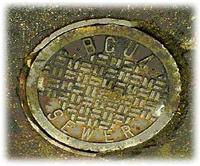
The EPA estimates that there are about twenty million manholes in the United States – or one manhole for every 400 feet of pavement on average; many of those manholes are in serious decay or in need of immediate rehabilitation or replacement
-
-
Testing new pavement materials
Scientists are trying to determine the durability of recycled materials for use in road construction; a Texas university is building a new accelerated pavement testing center, with the overall road pad at the accelerated pavement testing center could be a little bigger than a half-acre in size
-
-
Maldives to build floating islands to save country from rising sea levels
The Maldives Islands, a low-lying chain of twenty-six atolls in the Indian Ocean, are sinking; more precisely: due to global warming, the sea level is rising over the islands, most of which sit lower than three feet above the rising water; the Maldives government has embarked on an ambitious project: build floating islands, anchor them to the ocean floor, then relocate most of the population of 300,000 – and some of the tourist attractions – to them
-
-
Decline and fall: all built structures are destined to break down or fail
A series of infrastructure-related accidents in Ontario this summer has caused people to ask: Just how safe are the structures that we build? The answer a materials science and engineering professor offers may not be reassuring: “Nature always looks for ways to use energy in a favorable state — gravity always pushing things downwards is an example. Any built structure naturally goes against nature. Therefore, all structures will eventually be broken or destroyed — given the right amount of time, they will break down or fail.”
-
-
New STEM education initiative in Virginia
A 2010 Georgetown University study found that by 2018, Virginia will need to fill more than 400,000 science, technology, engineering, and applied mathematics (STEAM)-related jobs, while the country will confront a shortage of three million STEAM-educated college graduates; Virginia Tech and the Virginia STEAM Academy are forming a strategic partnership to address critical STEAM education needs in the Commonwealth of Virginia
-
-
Engineering students race first 3-D printed boat in Milk Carton Derby
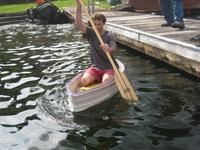
University of Washington mechanical engineering students braved uncharted waters as they paddled to the finish line at the annual Milk Carton Derby at Green Lake in Seattle in what they believe is the world’s first boat made using a 3-D printer
-
-
New method for detecting, measuring bridge damage
Researchers have created a bridge health index, which is a rating system that more accurately describes the amount of damage in a bridge; the health index can extend beyond bridges and apply to other structures, such as gas pipelines, dams, buildings, and airplanes
-
-
Ancient design concept leads to new ideas for building durable bridges
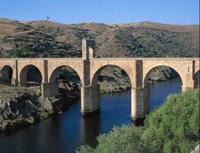
Engineers combine an ancient concrete arch form, dating back to the Roman empire, with a composite shell to create bridge beams which are designed to last 100 years
-
-
Geoengineering may lead to whiter sky
One idea for fighting global warming is to increase the amount of aerosols in the atmosphere, scattering incoming solar energy away from the Earth’s surface; scientists, however, theorize that this solar geoengineering could have a side effect of whitening the sky during the day
-
-
Feminine math, science role models do not motivate girls
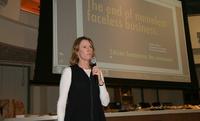
Women who excel in male-dominated science, technology, engineering, and mathematic (STEM) fields are often unjustly stereotyped as unfeminine; if women are perceived as having feminine qualities, however, their success may actually decrease interest in STEM, particularly among young girls, according to a new study
-
-
Bridges get a quick check-up with new imaging technique
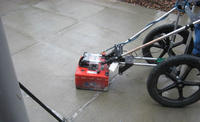
EPFL engineers have developed a new imaging technique which allows engineers to see the insides of massive concrete bridges; much like a sonogram, this technique provides quick, easy-to-interpret images, so that the health of these expensive structures can be assessed and monitored
-
-
California quake test shows promise of new building code
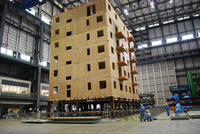
Researchers place a model hospital on a shake table to assess the structure’s ability to withstand earthquake; in accordance with California latest building code, base isolators, which are rubber bearings intended to absorb the shock of the motion, were installed underneath the structure; the hospital passed the 6.7-magnitude and 8.8-magnitude tests with flying colors
-
-
Rhinoceros beetles foretell future of flapping-wing design
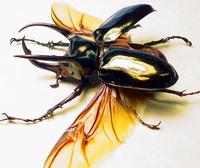
Researchers launch a quantitative investigation of aerodynamics and wing kinematics in rhinoceros beetle flight in order to shed new light on the evolution of flapping flight in nature; experimental study of the aerodynamic performance of beetles in forward/hovering flight will provide insight into designs for efficient and stable flapping-wing micro aerial vehicles
-
-
£5 million investment in U.K. rail technology, business innovation
The U.K. government is leading on an investment of £5 million to accelerate business innovation and growth in the U.K. rail industry, using the funds to support the development of technologies to address technological and business challenges
-
- All
- Regional
- Water
- Biometrics
- Borders/Immig
- Business
- Cybersecurity
- Detection
- Disasters
- Government
- Infrastructure
- International
- Public health
- Public Safety
- Communication interoperabillity
- Emergency services
- Emergency medical services
- Fire
- First response
- IEDs
- Law Enforcement
- Law Enforcement Technology
- Military technology
- Nonlethal weapons
- Nuclear weapons
- Personal protection equipment
- Police
- Notification /alert systems
- Situational awareness
- Weapons systems
- Sci-Tech
- Sector Reports
- Surveillance
- Transportation
Advertising & Marketing: advertise@newswirepubs.com
Editorial: editor@newswirepubs.com
General: info@newswirepubs.com
2010-2011 © News Wire Publications, LLC News Wire Publications, LLC
220 Old Country Road | Suite 200 | Mineola | New York | 11501
Permissions and Policies
Editorial: editor@newswirepubs.com
General: info@newswirepubs.com
2010-2011 © News Wire Publications, LLC News Wire Publications, LLC
220 Old Country Road | Suite 200 | Mineola | New York | 11501
Permissions and Policies
